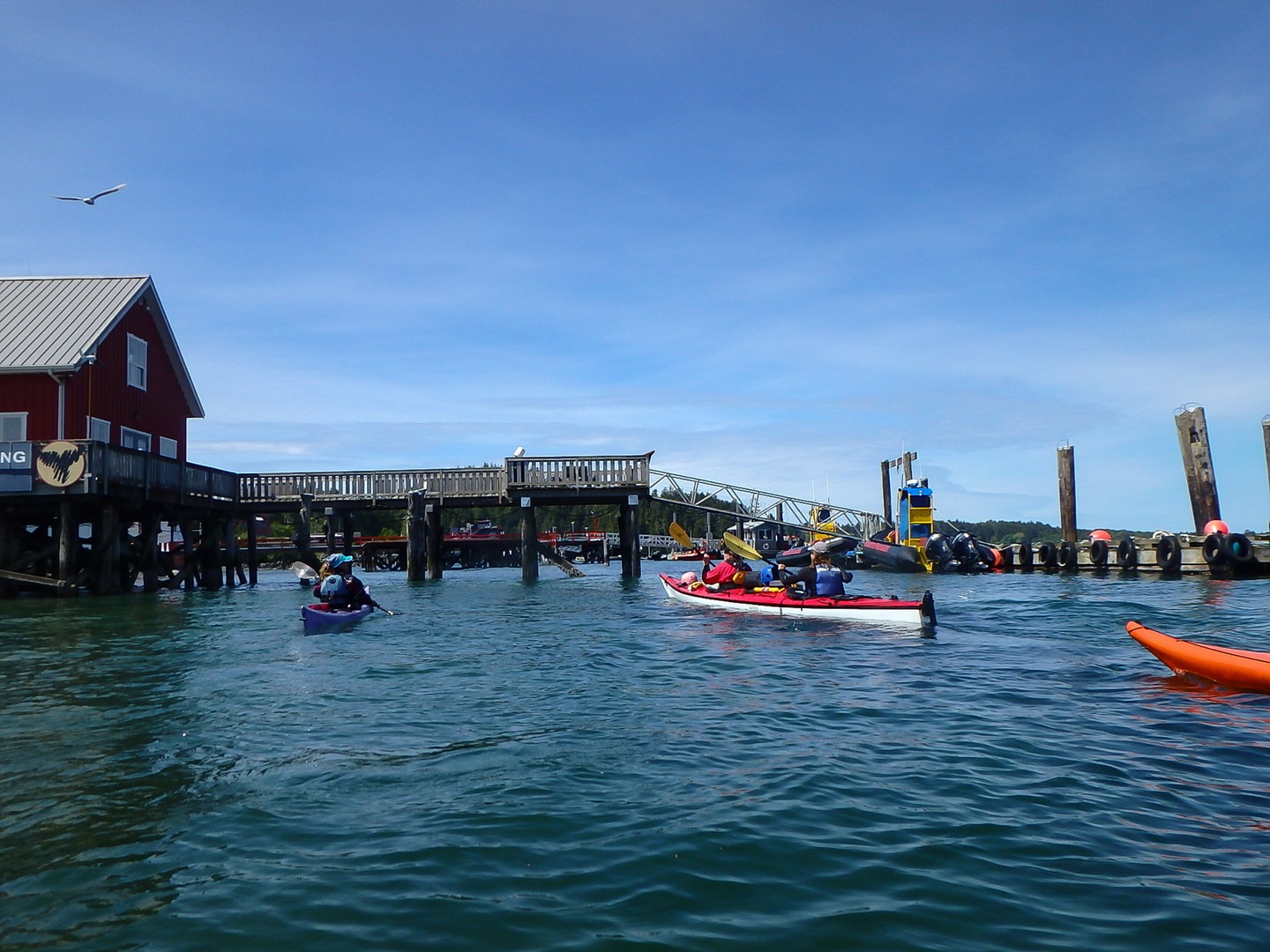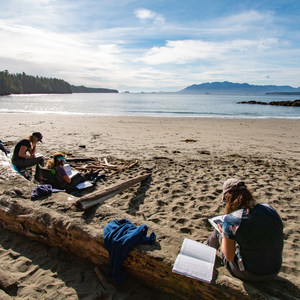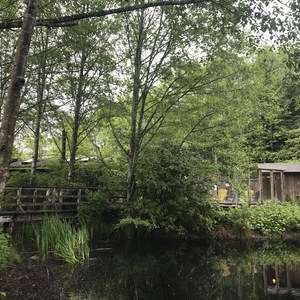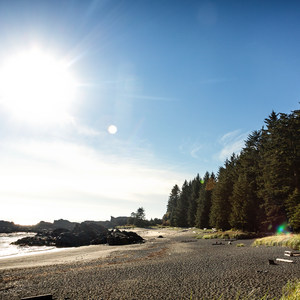You are here
Tofino Harbour is a classic paddle with stunning vistas of sharp peaks surrounding the Tofino-Ucluelet peninsula. A challenging spot to paddle, it shouldn’t be underestimated despite the ample number of paddlers, boaters, and seaplanes that occupy the area. Very high traffic, currents, and tidal flats make for a rather adventurous paddle. Despite being a sheltered harbor, this is considered Class 2 waters. All the same, it is a classic paddle destination. There are many tours in the area to accommodate you or shops to rent boats. If you have your own boat, there is a launch ramp for paddle craft beside the Tofino Air pier near Grice Point. Parking is available a 15-minute walk away.
Tofino Harbour contains two float airlines, three whale watching operations, multiple water taxis, and fishing operations. The whole area is buzzing with activity almost all year round. The first rule of marine traffic for paddlers is Might Makes Right. Small maneuverable craft are advised to keep clear of the path of short-tempered pilots on strict schedules. The best strategy in the harbor is to paddle beneath the piers and make a quick crossing to shallow areas when the coast is clear. Be sure to keep your eyes in the air, too, as planes frequently land very near the harbor.
Currents and tides factor into paddling in Tofino in a big way. The port sits at the mouth of a large inlet that will be moving a fair bit of water. While the 2-knot currents that normally go by aren’t much, paddlers who average 1.5 knots of paddling are likely to notice them. In Tofino, check the tides. In general, tides reach 50% of their speed within the first 2 hours of the tidal change. This isn’t a hard and fast rule, but it offers some guidelines of when paddling might be easiest.
Routes
There are two possible circuits you can do around the harbor, a short and long circuit.
At high tide, the whole Tofino Harbour is surrounded by land with only small water passages for motorcraft through Duffin Passage (SW) and Deadman Islets (North). If you get the tides and timing right, these sandbars that sit 2 to 3 meters above the low-tide mark will be submerged and make for safer passage for paddlecraft.
For both circuits, if the tides are flooding, then heading west is best. First, you will make a quick dash to Felice Island. If the sandbar is beneath the water, then you can head along the sandbar north of Felice Island, using it as shelter from the current. Continue along this sandbar until you get to the green buoys that mark the motorcraft route due north of Tofino. Cross quickly to the small islets and across the sandbar toward the larger island. There is a shipwreck on the western beach that makes for an interesting stopping point. Crossing the other side, you can paddle the east side of Fradman’s and along the coast of Stone Island and Nelson Island.
Alternatively, head the opposite way along the sandbar mid-harbor to Arnet Island and along the shores of Beck Island. This is a great way to minimize exposure to traffic before crossing quickly to the Strawberry Islands and back into the harbor. This route has little current and is a great choice for newer paddlers. If the tide is ebbing, then reverse the route.
If you fancy a longer circuit than from Felice, cross to Stubbs. There are often larger swells that can be fun to paddle through on the west side of Stubbs Island. Use the sandbar as you paddle north toward Opitsat and Meares Island. Just west of Opisat is a great beach with a deep cave that makes for interesting exploration. From there, follow paddle toward Stockham Channel. Just past Stockham, there is fun current to play in at the large beacon in the middle of Heynen Channel, where you can continue around the backside fo Stone Island down to Riley Island and then across to Usatzes Point, where you can paddle through the harbor beneath the piers. If the current is ebbing, then reverse this route.










Comments
Sign In and share them.